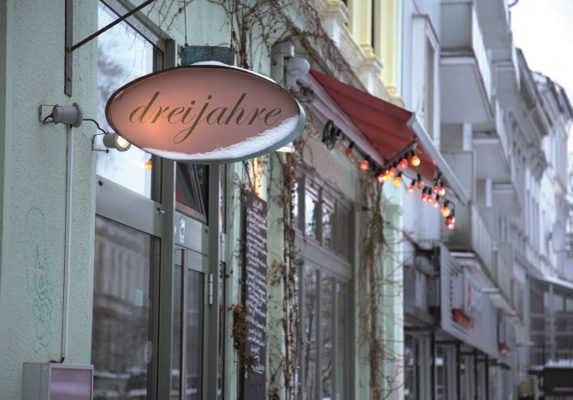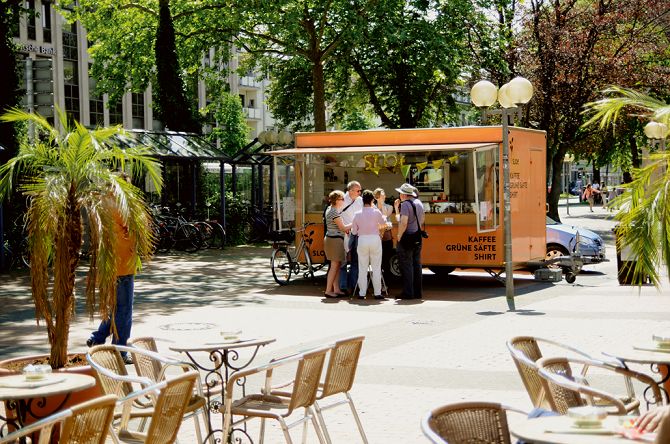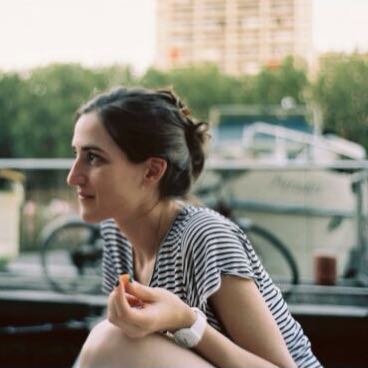Search
To search for an exact match, type the word or phrase you want in quotation marks.
A*DESK has been offering since 2002 contents about criticism and contemporary art. A*DESK has become consolidated thanks to all those who have believed in the project, all those who have followed us, debating, participating and collaborating. Many people have collaborated with A*DESK, and continue to do so. Their efforts, knowledge and belief in the project are what make it grow internationally. At A*DESK we have also generated work for over one hundred professionals in culture, from small collaborations with reviews and classes, to more prolonged and intense collaborations.
At A*DESK we believe in the need for free and universal access to culture and knowledge. We want to carry on being independent, remaining open to more ideas and opinions. If you believe in A*DESK, we need your backing to be able to continue. You can now participate in the project by supporting it. You can choose how much you want to contribute to the project.
You can decide how much you want to bring to the project.

Anneli Käsmayr is a founding member of dilettantin produktionsbüro, created in 2003 in Bremen as an open artists collective that acts in the conceptual space between art and everyday life. In installations, interventions and performances, the group stages temporary spaces that always make use of a gustatory, enjoyable layer as a communication moment. Their last works have included a dinner series (Eating the Forest), a food truck and fashion project (Sloe – Tu thee good), a temporary Kunstverein (Thisisnotashop), a restaurant and cafe (dreijahre), a record store (sex®shop) and a hotel (HOTEL). The group gives workshops and seminars on taste, performance and hospitality as aesthetic practice and implements site specific hospitality and dinner formats.
The description of dilettantin produktionsbüro’s work in its website says that the project explores the boundaries of art and everyday life through gustatory elements. When I met you in Bremen some years ago you were working on No ART Around, the publication about the project dreijahre. Tell us a bit about this work.
dreijahre was a restaurant for the fixed length of three years, or 1095 days. We had started it after college as an experiment on how close you can get to the everyday life in doing art before tipping over. Before we had realized different projects over the years that always had a time span that seemed kind of common for art shows, a bar pop-up for two days, a cafe for several weeks, a hotel for three days. So the idea seemed intriguing to make it more difficult to recognize it as art in e.g. extending the time frame. Three months seemed not long enough, so we chose three years. Initially we were planning on a re-enacted bar space but the place we were looking at had a license that required cooked food, so we turned it into a restaurant with a cafe, bar and a tiny secret club in the cellar. A digital count down behind the bar ticked down the days which transformed the whole space into a disappearing one from the first day on. This was actually a very powerful strategy because the progressing density of the project pulled us together. There was no room for laziness. I think in knowing that the time is circumcised it changes the way you perceive your own work or anything, really. In the process of the book we did after dreijahre in a conversation with René Block and Anna Bromley[[Spooning Away. Rene Block in Conversation with Anna Bromley and Anneli Käsmayr. in: No ART Around, Berlin, 2012.]], Block mentioned that all of his positions or projects he actually timed to the day, three years, ten years, fifteen years… It prevents you from routine and I think there is a lot of energy in that.
The length of three years completely changed the work for us – getting up each day to do something that doesn’t necessarily look like art but doing it in order to do art was quite a challenge, but a joyful one. It felt like emerging into the role of a restaurateur every day, very consciously. If you take away the immense financial pressure, the odds of being an employer and the naivety to do this completely untrained and green, it felt like a true luxury. To be able to explore our practice on a daily basis. And we were able to do so because we had a business partner that trusted us in the weirdness of doing a restaurant this way, which was crucial for the whole project.
What kind of reception did this work have? Was the public conscious that this was an art project and not just a restaurant/café?
As the concept was to get as close as possible to non-art the reception of the audience reflected that, people came there just for the food or drinks, as a social hub, and others were intrigued by the concept of being part of an art work. I think the heterogeneity of the audience (and of their expectations) was really necessary to spark the question if this can be art at all. The interesting questions are often the ones that generate a debate. In the sketching process we actually evaluated where this project should take place and went on a field trip to Berlin and Amsterdam to investigate gastronomic atmospheres and find out what and where we wanted to be. We then realized that if we would do the restaurant in Berlin we might lose an important factor, the heterogeneity of the audience and that we would risk of being captured by a certain art-crowd or in-crowd which would make the doubt of what this place actually is, disappear. Even in small-town Bremen, where we decided to put the project, we experienced a certain crowd-changing in the beginning, when different audiences seemed to check us out. We were extremely lucky to have quite a broad crowd after a while that ranged from families, lovers, business people, even elder people on weekend afternoons to students. A lot of people from the theatre and creative fields came regularly, too.
Do you see hospitality as a way to seduce the public?
Hospitality is always been drawn to a certain idea of opening up an atmosphere to people that makes them stay and feel good. What might sound a little innocent and superficial at first to us is actually a strong quality, the idea of reaching people, to touch them genuinely. To have them enjoy the essence of the whole set-up. There’s a certain magic in using space, sound, materials, light, gustatory elements to create something that actually reaches people emotionally. Food can do this very easily, also music can. Likewise, being aware of our sensorial perception changes the way we reflect on something. One speaks (and thinks) differently when one eats or drinks.
The interesting thing about food is that taste and smell both are processed in the limbic system, so we can have a very strong emotional reaction to it even before the ratio kicks in. In that way we use gustatory elements to seduce the public, to surrender into that very moment.
I think this ability to reach people emotionally is the chore quality of hospitality business and maybe even art. There’s no art work that hasn’t been created to be perceived, taken in, resonated. We are social beings, so we want to make contact, be reflected and inspired.

You are currently working on a PhD project about how emotional touch and culinary taste relate to each other. Can you tell us a bit about your working method? Do you see the events you host as some kind of experiment or test for your research project?
Certainly our collective art works and the experience of how people react to an atmosphere we created has led me to this very question, what is it about the sensory experience of taste and smell that can trigger emotions so strongly, good or bad? What happens in the brain, why does the pleasure of nice flavor do us good on a rather holistic level and what will happen if we focus on having joyful moments more often? In 2014 my co-director Andrea Lühmann and I started a work series named “Do thee Good” that focuses exactly on this question and we realized that it was quite uncommon to broach the issue of this in the art world. There seems to be little space for “doing yourself good” in the arts. To me it’s really off-putting that many people I know in the art scene, be it artists or curators, are kind of stressed about the art business and the dynamic of the market. There is a lot of feeling of abuse, expectations, pressure, being underpaid or not paid at all, the competition that logically leads to a pyramid, few people on top and thousands of people on the low level. The unspoken rule that success is more about having the right lobby can create quite some bitterness; people think they can calculate their work impact instead of focusing on doing and enjoying their work. And I think this is unhealthy. My old professor, Rolf Thiele, gave me the maybe most important advice as an artist: do what you love and do it within art. And I try to pass this on to my students, too. I think because of this training I always trusted in a medium that might not look like an art medium but that I treasure – enjoyable flavor. Food is such an easy thing in this way, there can be a lot of joy in the simplest eating experience, take a summer warm strawberry fresh from the field or the smell of freshly baked bread! So seductive. On the other side our language is full of expressions that use terms of eating to describe what’s happening emotionally. We trust our gut feeling, something makes us choke or we have to digest information. There seems to be quite a historic connection between the gut and our intuition. I use this connection in workshops and consulting a lot.
So I was quite excited when I got the chance to work in the SNF research project “Cooking and Eating as Aesthetic Practice” located at the University of Arts and Design Basel in Switzerland. It is an explorative project that investigates the points of contact between the fields of cooking and art. As part of my PhD research I meet with many experts in working with flavor – chefs, producers, bartenders, perfumers, bakers, artists, designers and also scientists from different fields. It’s interesting to see how passionate most are about their work and besides that it’s terrific to meet these inspiring people. I learn a lot about different approaches to seeing and conceiving culinary taste from interviewing them.
Lately, there have been some events around food and art such as the ones organized by Entretempo Kitchen Gallery in Berlin and Paris. Do you think that kind of project (dilettantin produktionsbüro’s work and other artists working with food and art) can reach the same effect in such a big event with a lot of other similar projects or that, on the contrary, the public reception of the work is completely different?
This is a difficult question because I find it hard to bring all the different approaches with food and art together, just as it would be with painting or installation. It’s just the similarity of the medium in the end, so naturally the art term and attitude of each artist will slightly or even widely differ. However as for our collective projects we actually do need an alien and non-art surrounding to an extent and also a certain closeness of the space, but also because we mostly work site specific. We just like the friction that comes from something that doesn’t meet your expectation. So if we’d be given a museum space we’d probably turn it into music bar, but a real economic one. Or a weird gift shop that actually sells stuff. Just as this record shop in a gallery that I once did with the artist-cum-musician collective sex. And I wish I could have seen Carsten Höller’s Double Club in London, but that was at the peak time of our restaurant project.
So, a food art festival would be rather difficult for the work of dilettantin produktionsbüro, but then, who am I to predict what the reception of the audience would be? I have friends who say that they had the most magic music moment in a specific concert of this band at that crowded festival between all these choices of music… And I’m more the going-to-one-concert person and walking home or diving into a bar afterwards. But then again I know that our sensory perception is made up by so many different things, the physical surrounding, the people we are with, how rested we are and so on. Which makes me really excited about meeting another expert soon, Charles Spence, an experimental psychologist in Oxford, who has done a lot of research.

Glòria Guso is an art historian and a researcher in the social sciences. She was born in the periphery of Barcelona but lives in Paris and her second home is Germany. For her PhD thesis in sociology she studies the international mobility of the visual arts professionals. She writes, coordinates, edits, documents and criticizes.
"A desk is a dangerous place from which to watch the world" (John Le Carré)